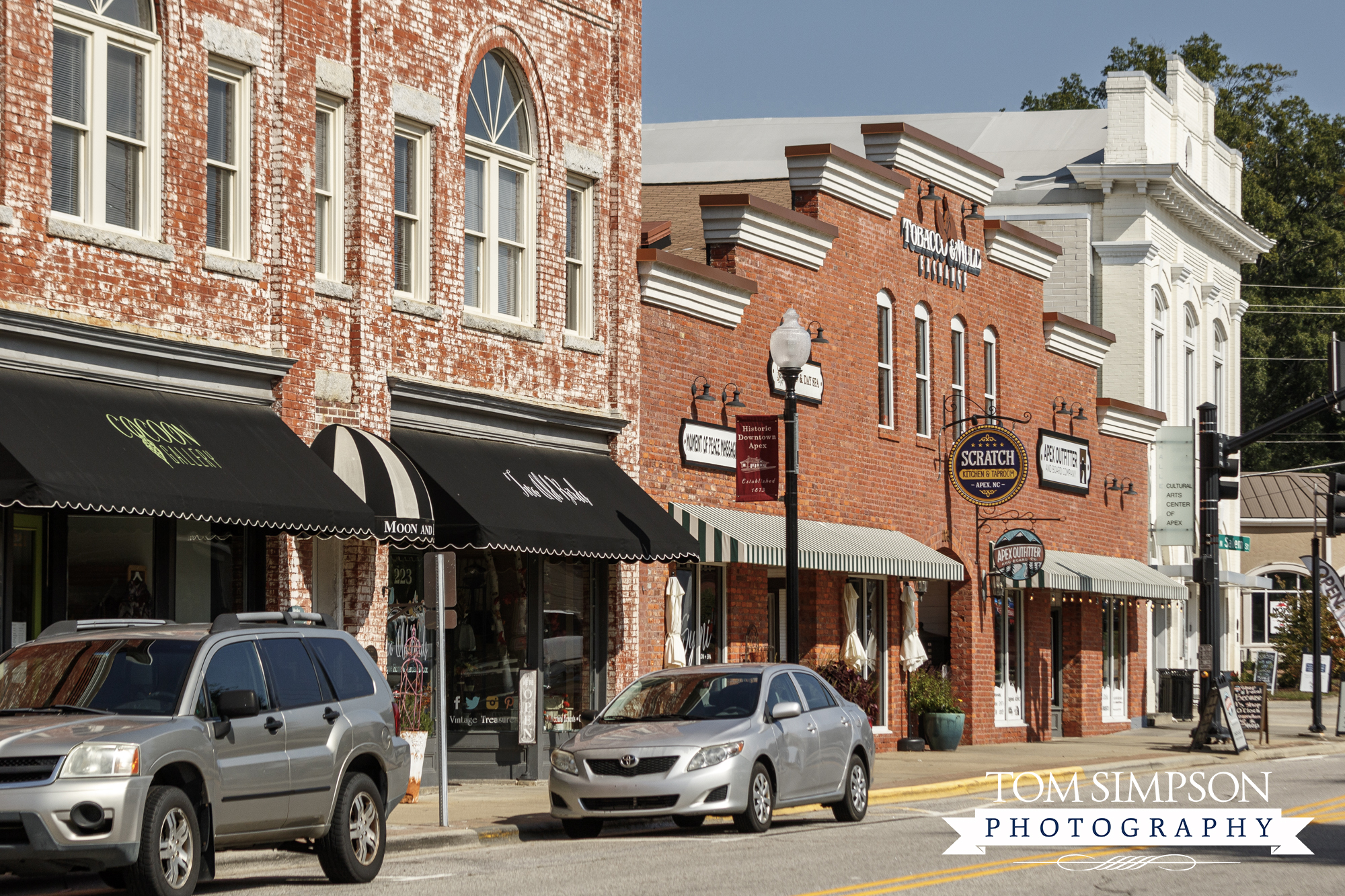Plenty of Things to See in Apex
There are scads of small towns across America with old, historic buildings. However, not all are vibrant and inviting. Not so with Apex, North Carolina. Its downtown district has so many things to see it invites you to take a long stroll.
Apex is a short 20-minute drive southwest of Raleigh in the heart of the state. During a visit, you’ll find town history, plenty of shopping and places to eat, plus a little this-and-that.
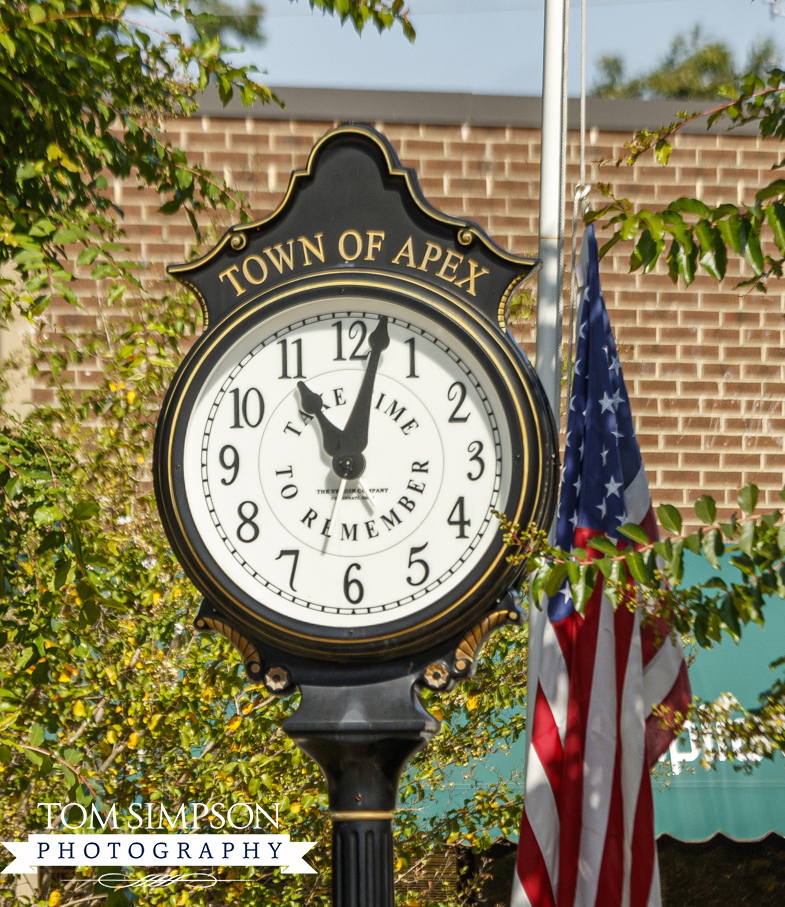
This inviting little town is proud of its heritage.
Visitor's Center:
220 N. Salem Street
Apex, NC 37502
Contact:
(919) 362-6465
Hours:
8 AM - 5 PM, M-F
Website:
Town of Apex
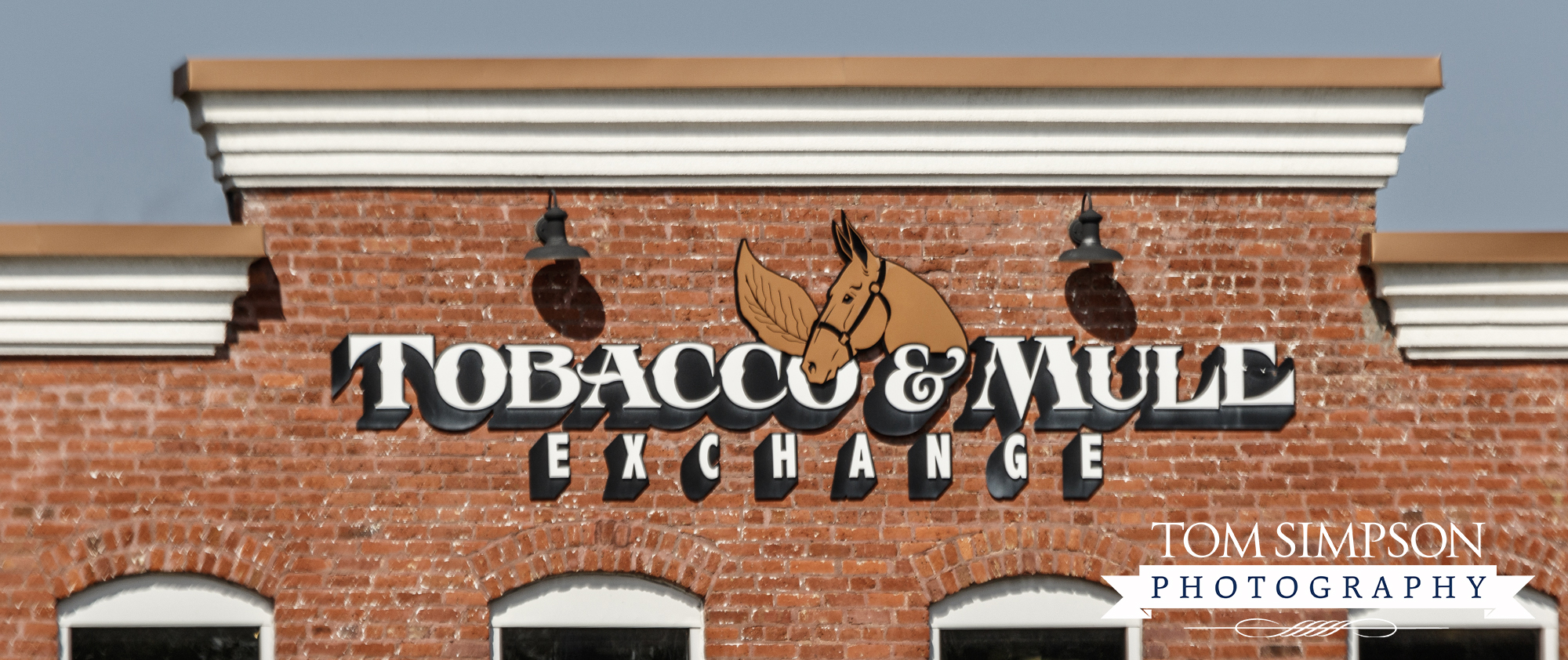
A few historic buildings retained their original name, but inside, they house a variety of businesses.
Take in the Historic Architecture
We love finding small towns that not only embrace their history, they also preserve it. That’s Apex.
Many of the buildings in the downtown area, dating from 1870 to 1940, are on the National Register of Historic Places.
Strolling through Apex, we saw well-maintained buildings in a variety of architectural styles. Often, we saw historic signage or a brief history of the building.
Some of the old buildings still show their original brick color. Many are painted. One stretch on Salem Street has buildings painted bright colors.
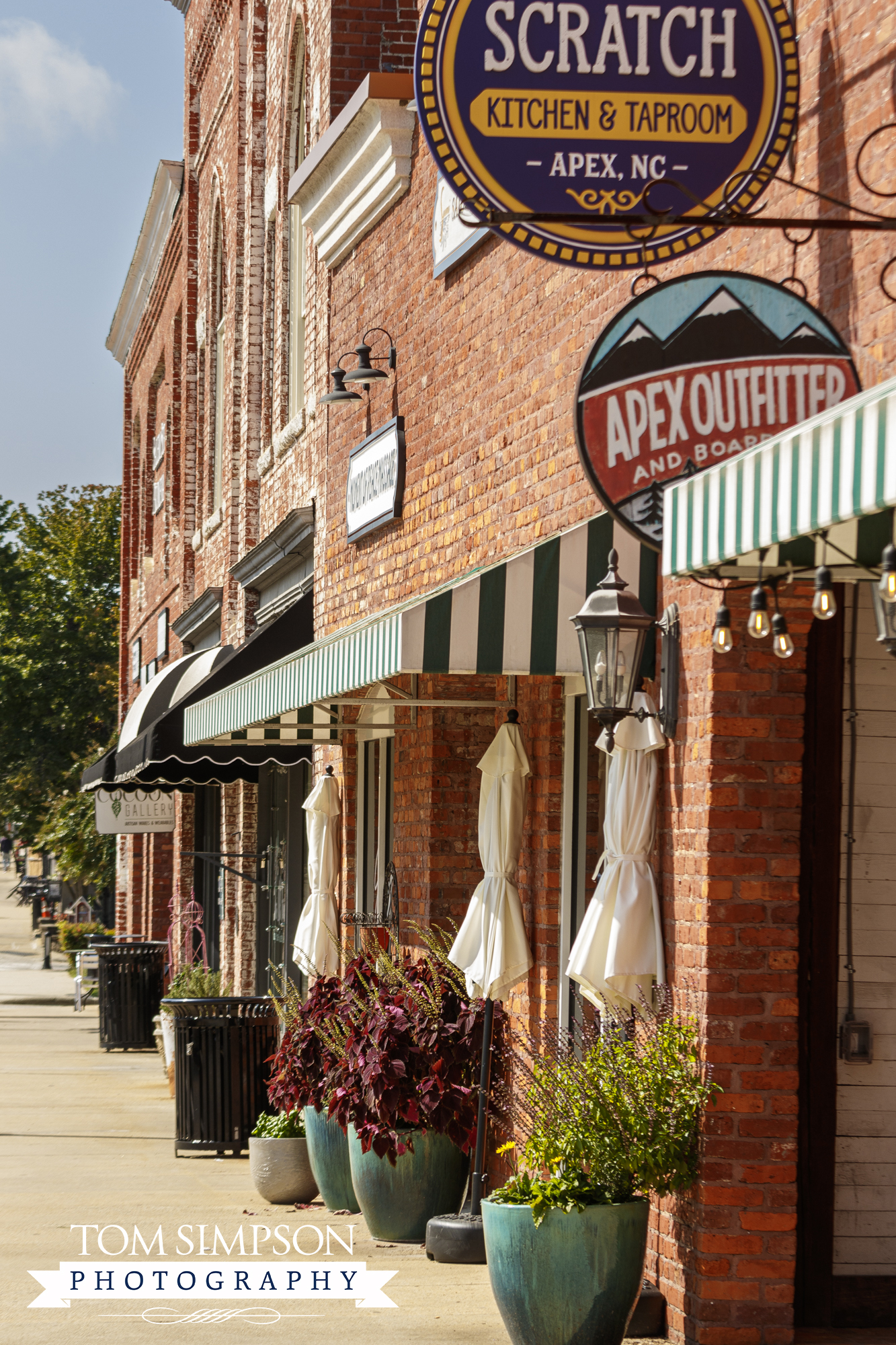
Every sign and storefront caught our eye, enticing us to enter.
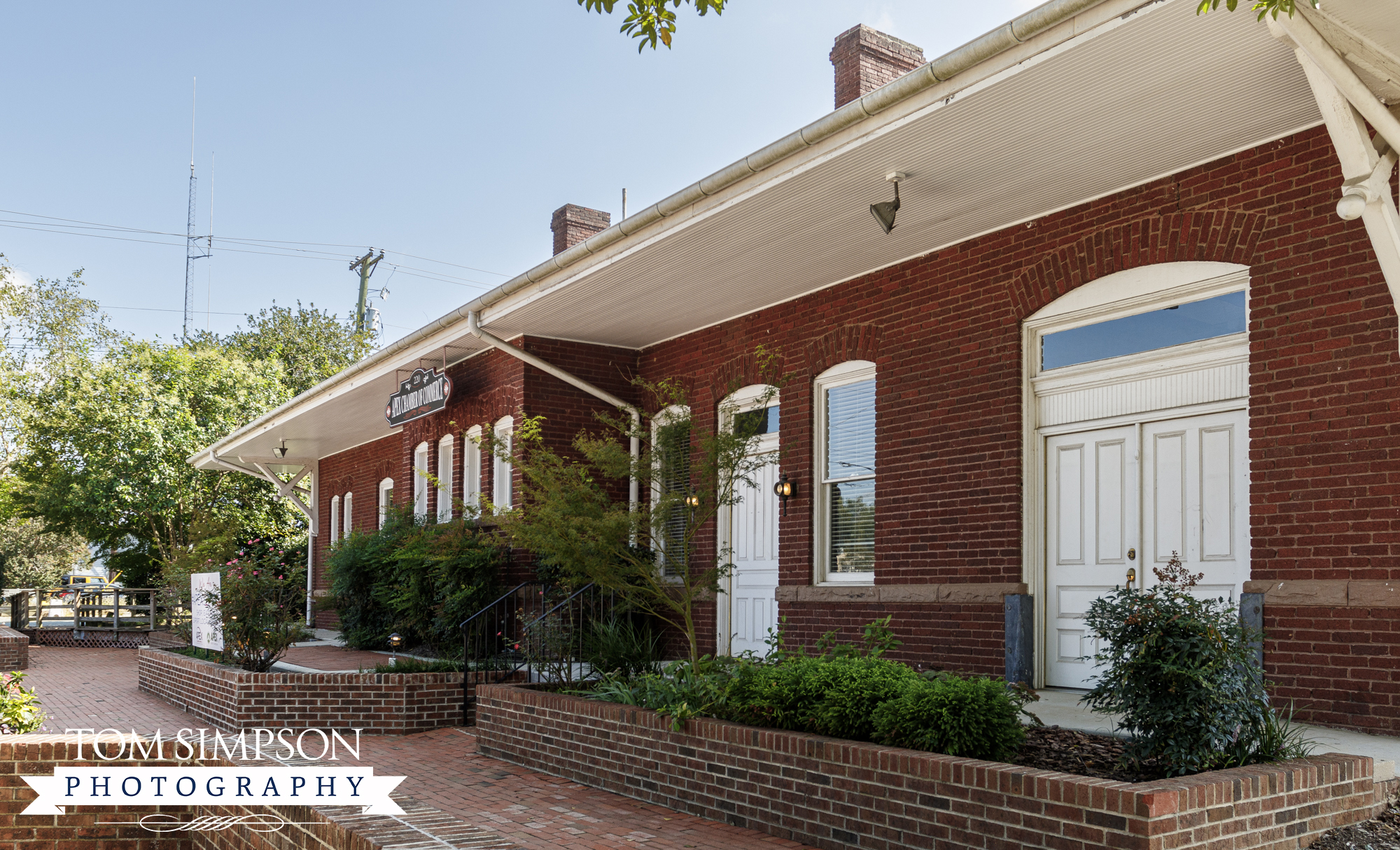
The Depot, home to the Apex Chamber of Commerce, serves as a visitor center as well,
"The Depot"
The 1914 Victorian-era railroad depot, once the hub of town activity, now serves as a welcome center. It houses both the Chamber of Commerce and the Town of Apex Economic Development.
Do you know where Apex got its name? Hint: it has a lot to do with the railroad.
At one time called “Log Pond,” the name changed to Apex because of its location on the railroad line. The town sits at the highest point, or “Apex,” on the old Chatham Rail Line.
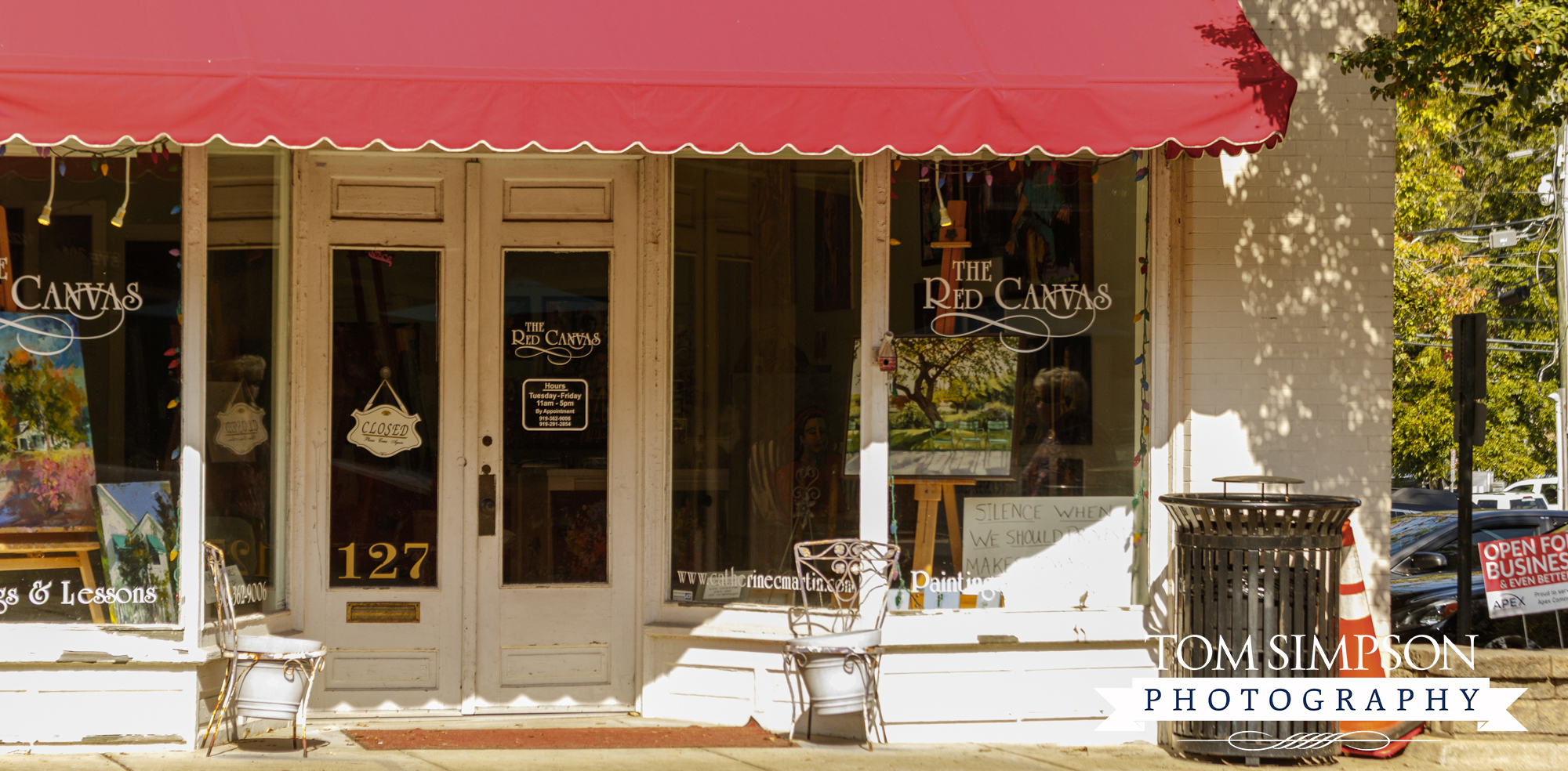
Stores in Apex keep the historic look but freshened up with a few modern touches.
Shops, Shops, and More Shops
The Town of Apex is very pedestrian-friendly. Everything from the appealing shop windows to open doors caught our eye, drawing us in to browse. There is a nice mixture of charming specialty shops.
Sidewalks are wide, clean, and weed free. Many stores had pots filled with beautiful flowers and plants near the entrance adding to the already pleasant atmosphere.
Shops are close to the street. In addition, you find benches along the way inviting you to sit, relax, and take in the town.
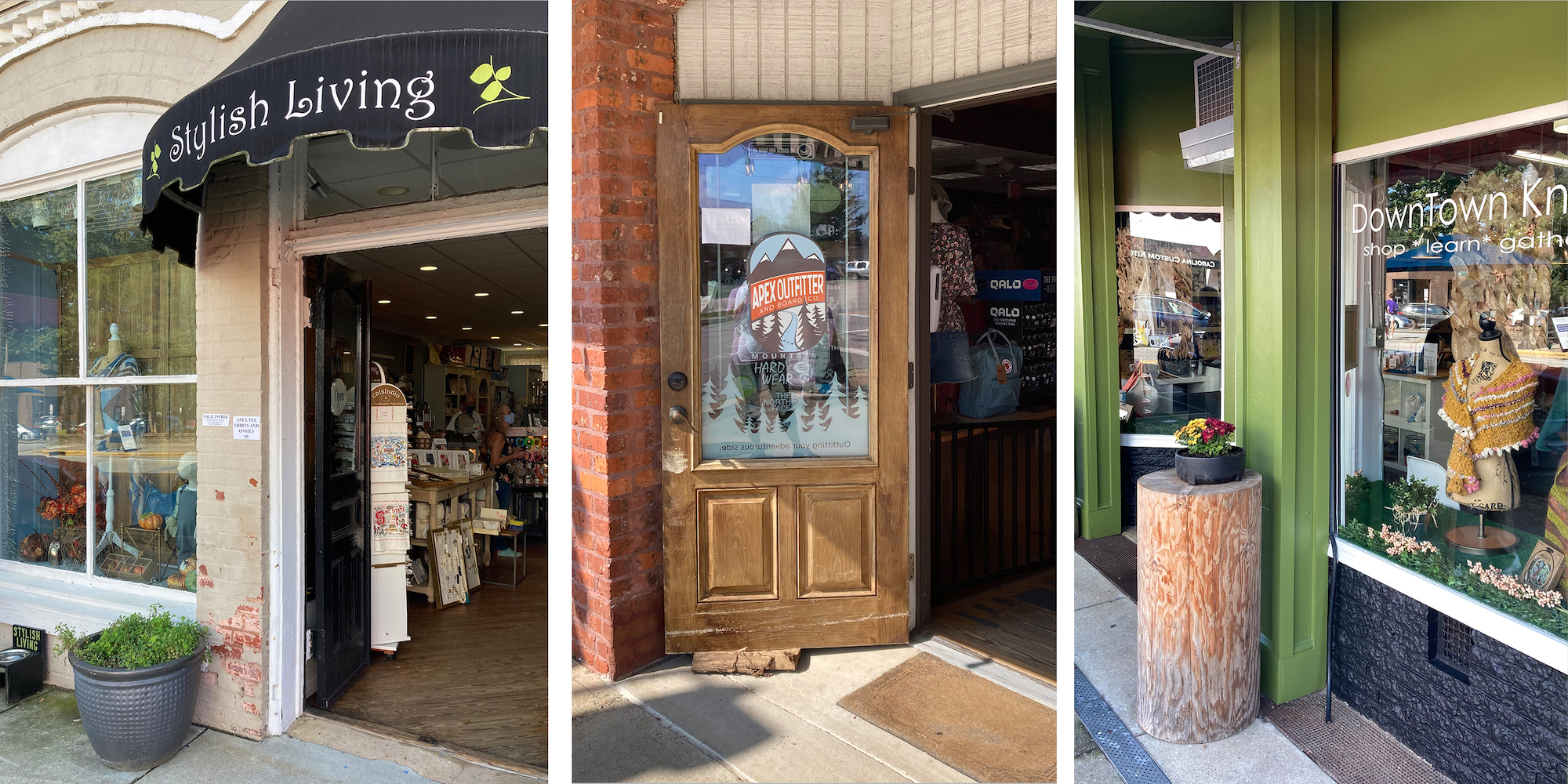
We visited on a sunny but not too warm day and found many shops with doors wide open, welcoming guests to enter.
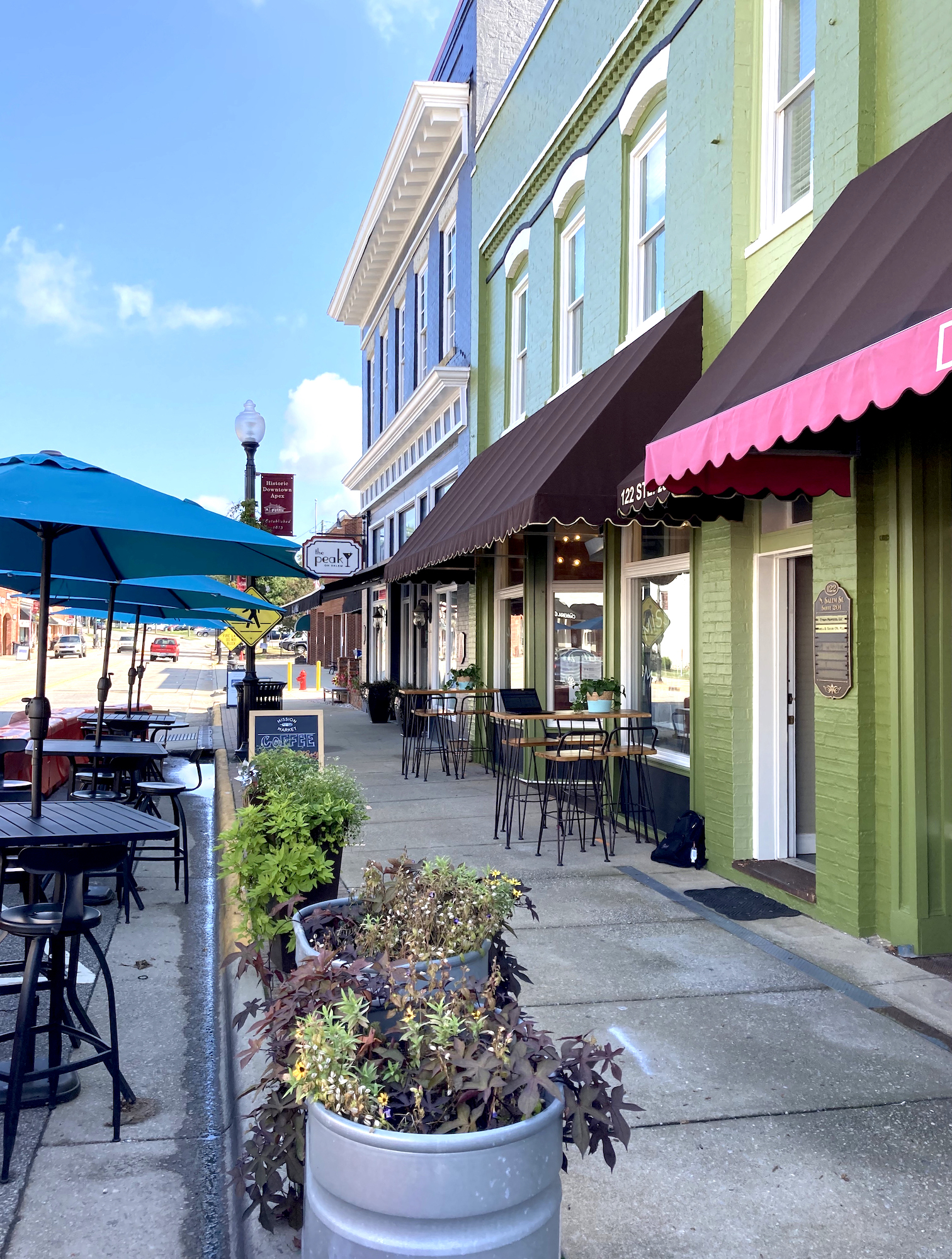
Colorful, captivating, and CLEAN!
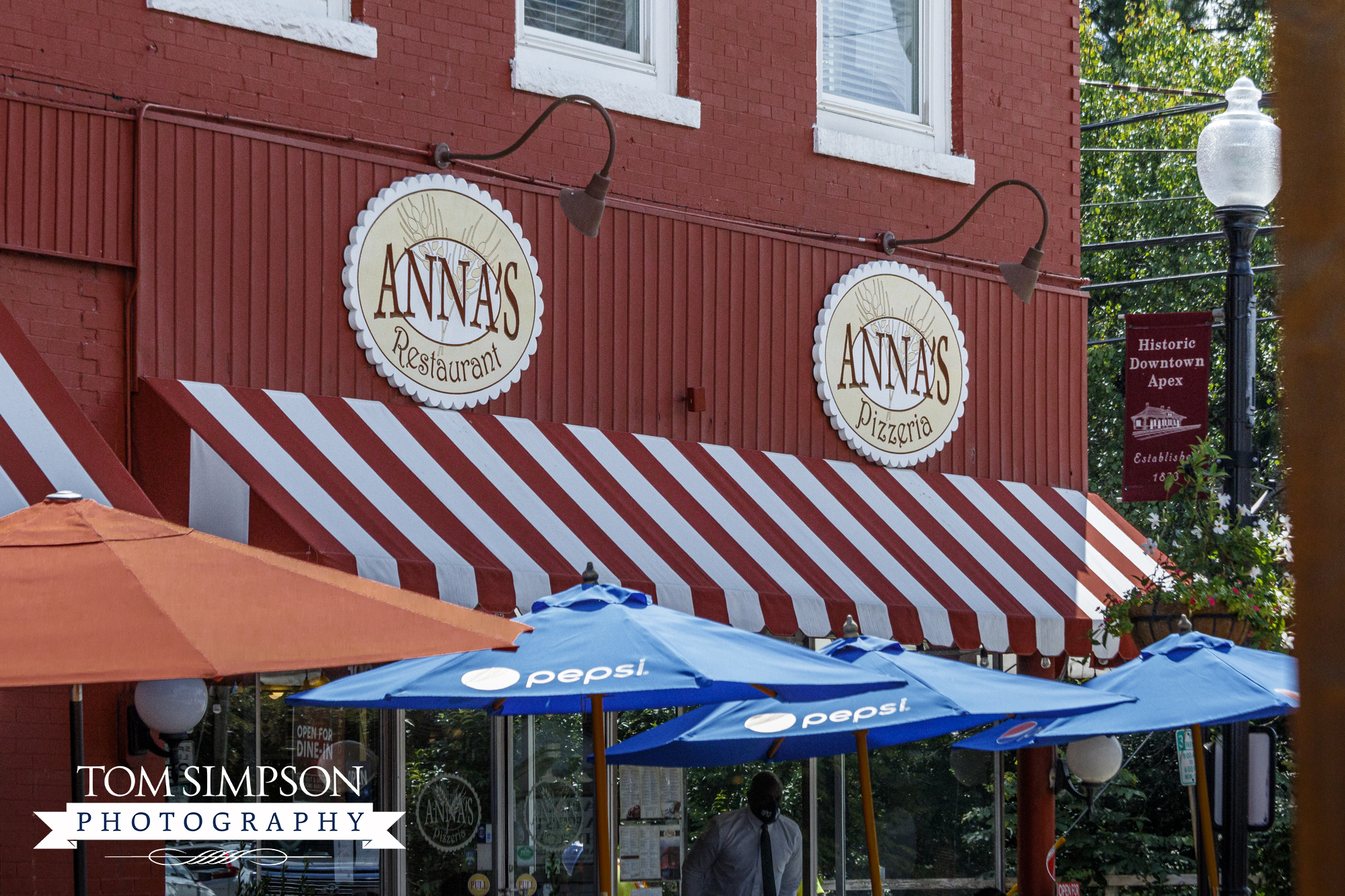
Get a quick, tasty, and budget friendly lunch at Anna’s Pizzeria Restaurant.
Stop and Eat while you Stroll
Apex is home to several award-winning and locally owned restaurants. As you wander up and down the 2-block stretch, you catch a whiff of savory smelling food, possibly coming from any of the eateries.
Our visit was during lunch. Hearing Anna’s had a fabulous pizza lunch special, we headed there first. How was Anna’s Pizzeria? Awesome! Read about that experience HERE.
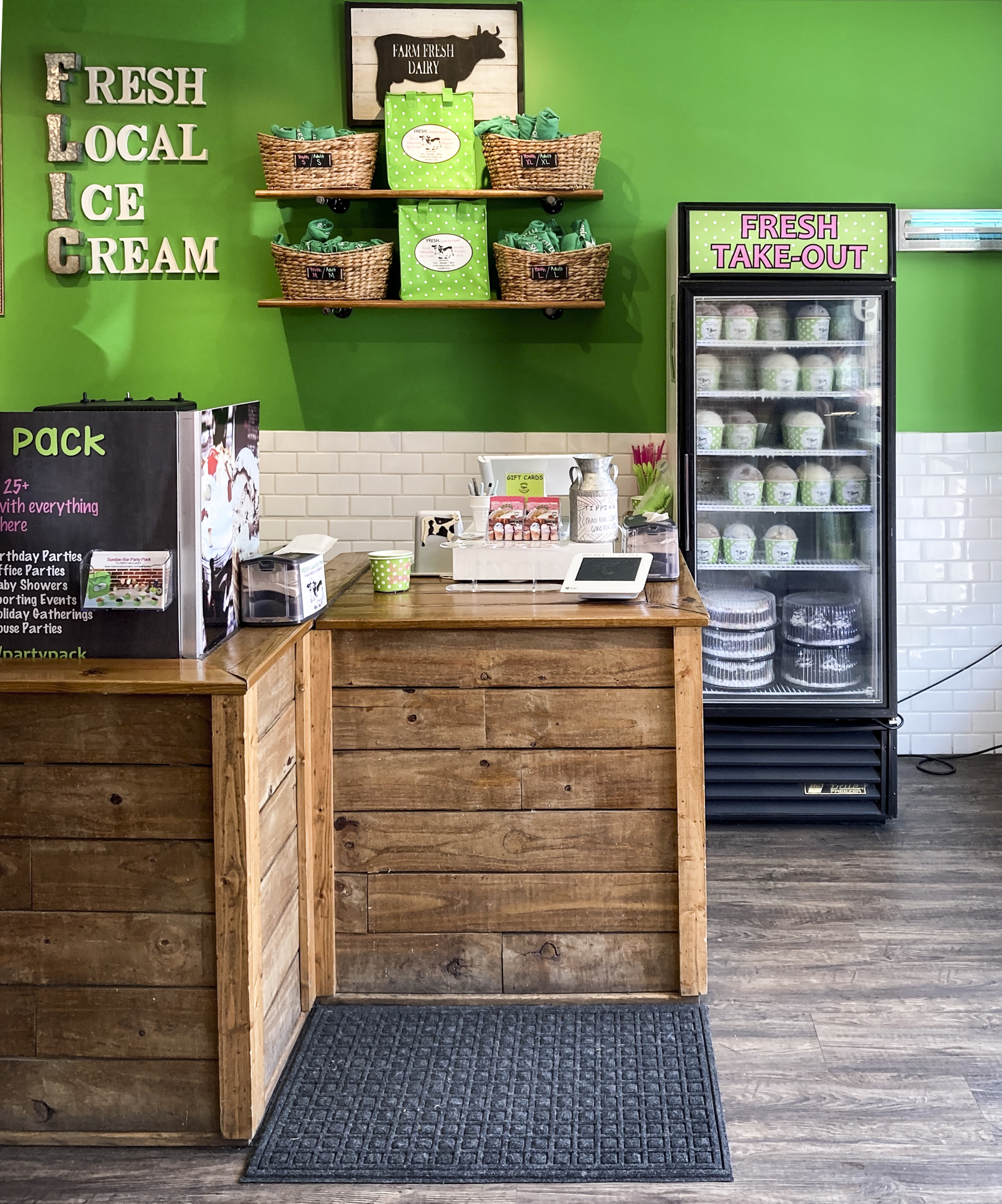
Step across the street from Anna's for some of the best ice cream around at FRESH. Local Ice Cream.
On the opposite side of Salem Street, we found our favorite treat—ice cream. FRESH. Local Ice Cream lives up to its name. Made in-store from locally sourced ingredients, they serve it up big.
We enjoyed our visit there enough to write about it as well. So, if you want to know more about this awesome place, click HERE.
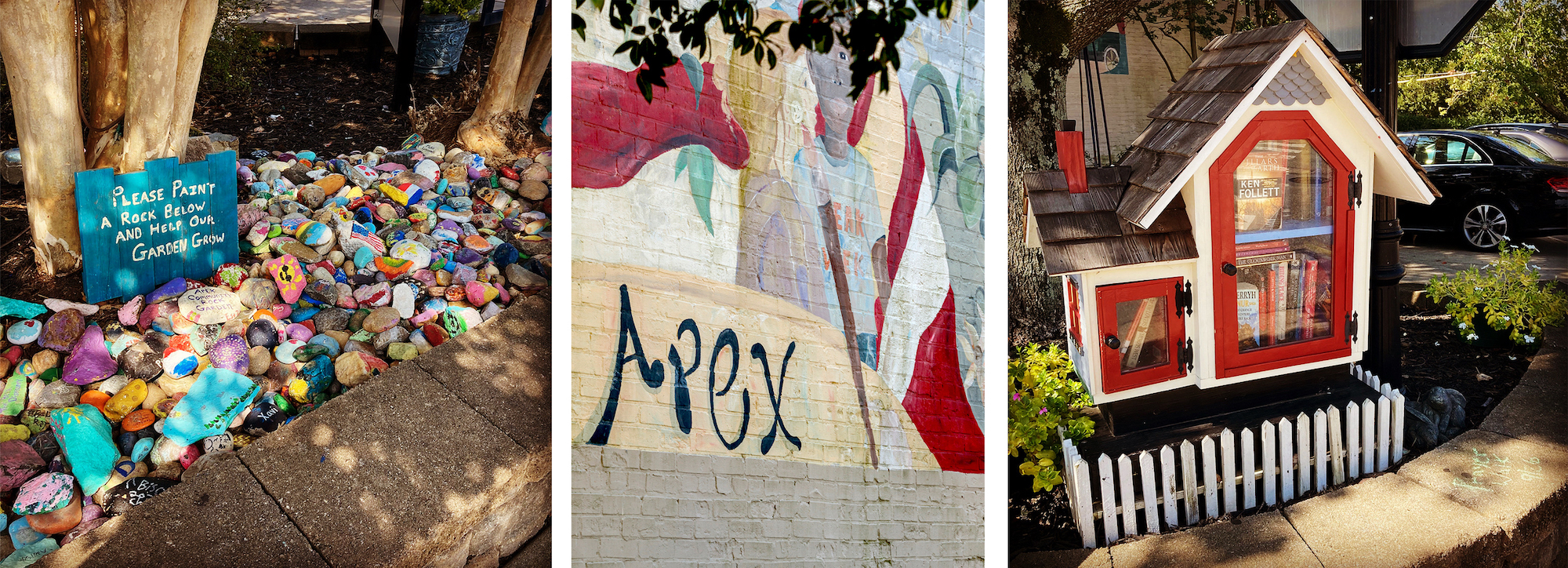
We enjoyed the painted rock garden, wall mural, and miniature “Book Exchange” house (at the corner of Salem and Saunders).
See a Little This-and-That
There are more things to see than just buildings and shops. Tucked in corners or along the sidewalk, a little this-and-that caught our eye.
One spot on the corner of Salem and Saunders Streets had a rock garden and tiny little “house” for a book exchange. Behind it on the wall was a mural depicting the flag, kids, and the town name.
On the opposite corner, we saw a 9/11 Memorial and the “Town of Apex” clock. Both sit in a prominent area reminding everyone to take time to remember.
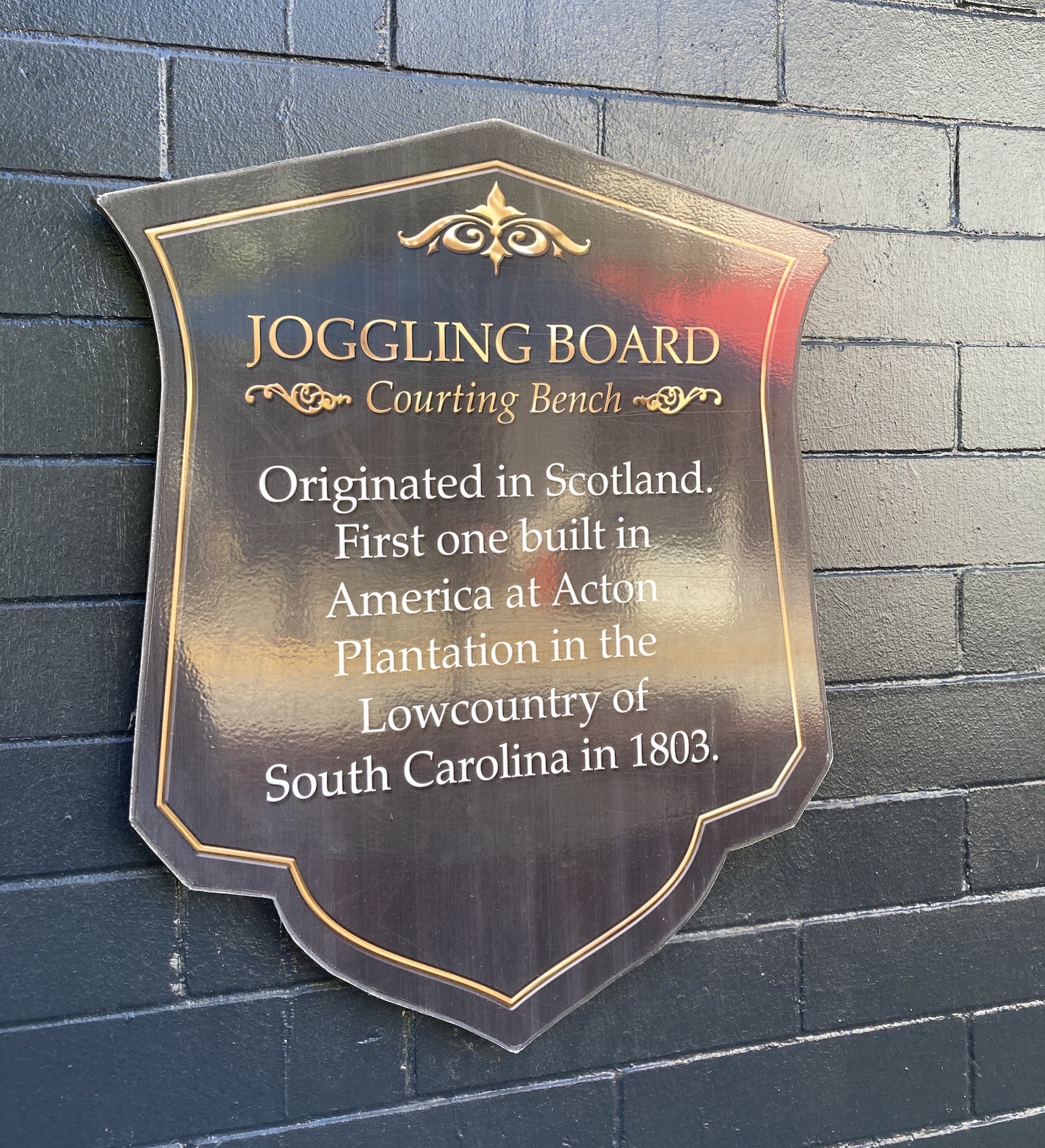
We found a sign giving the history of the “joggling board.” Yep. I had to look that one up. Interesting—and now I want one.
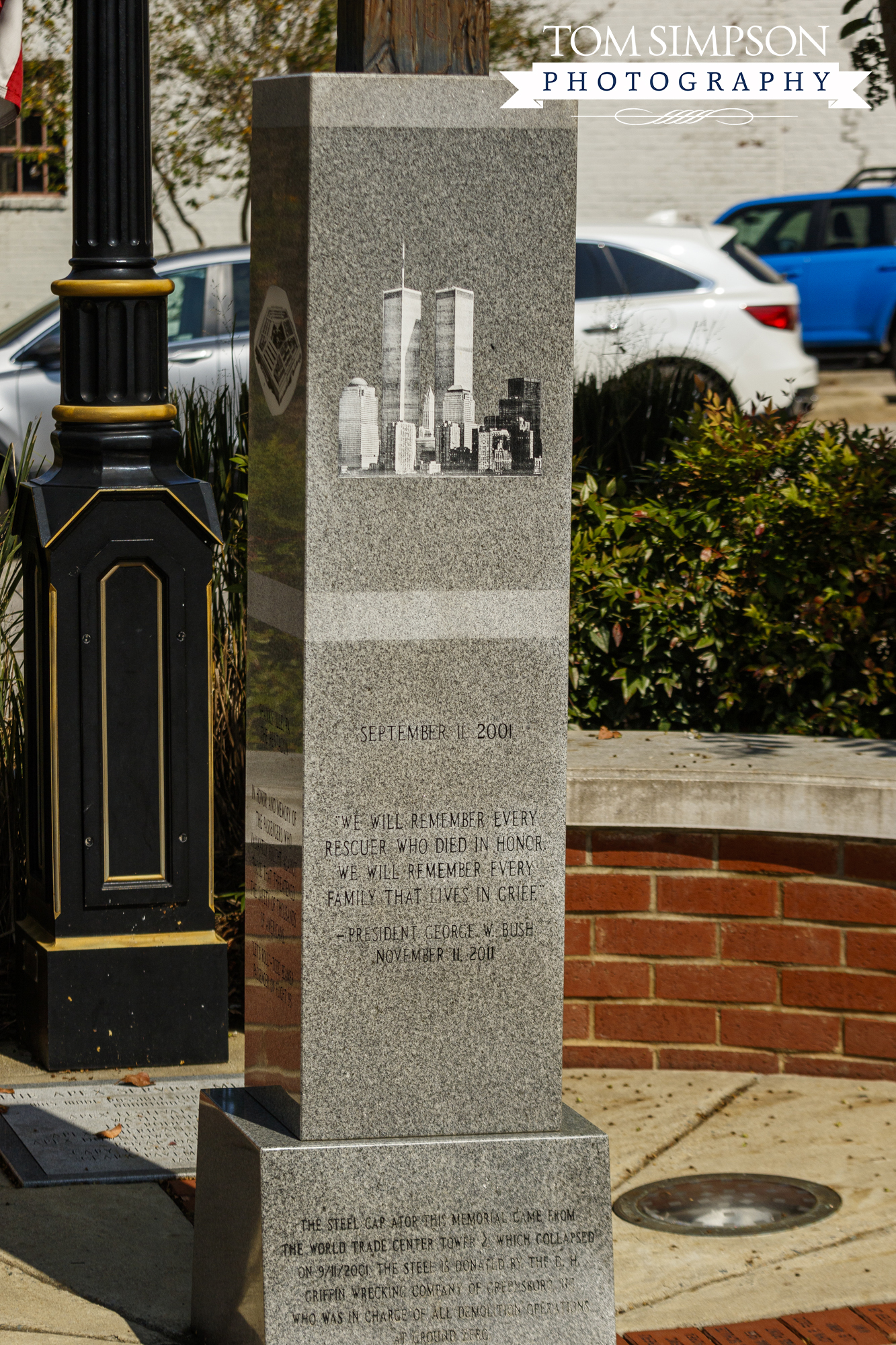
Look for the 9/11 Memorial at Saunders and Salem. It has a steel cap made from a piece of the World Trade Center.
Lots to See in a Short Few Blocks
While downtown Apex isn’t as large as other places we have visited, we found it to be the perfect size for an afternoon stroll.
It’s just large enough to take in all the things to see as well as having enough time to visit the shops and learn about the town.
It may be one of the fastest-growing suburbs in America but Apex is maintaining its timeless charm.
Worth the visit? Yep. We think so.
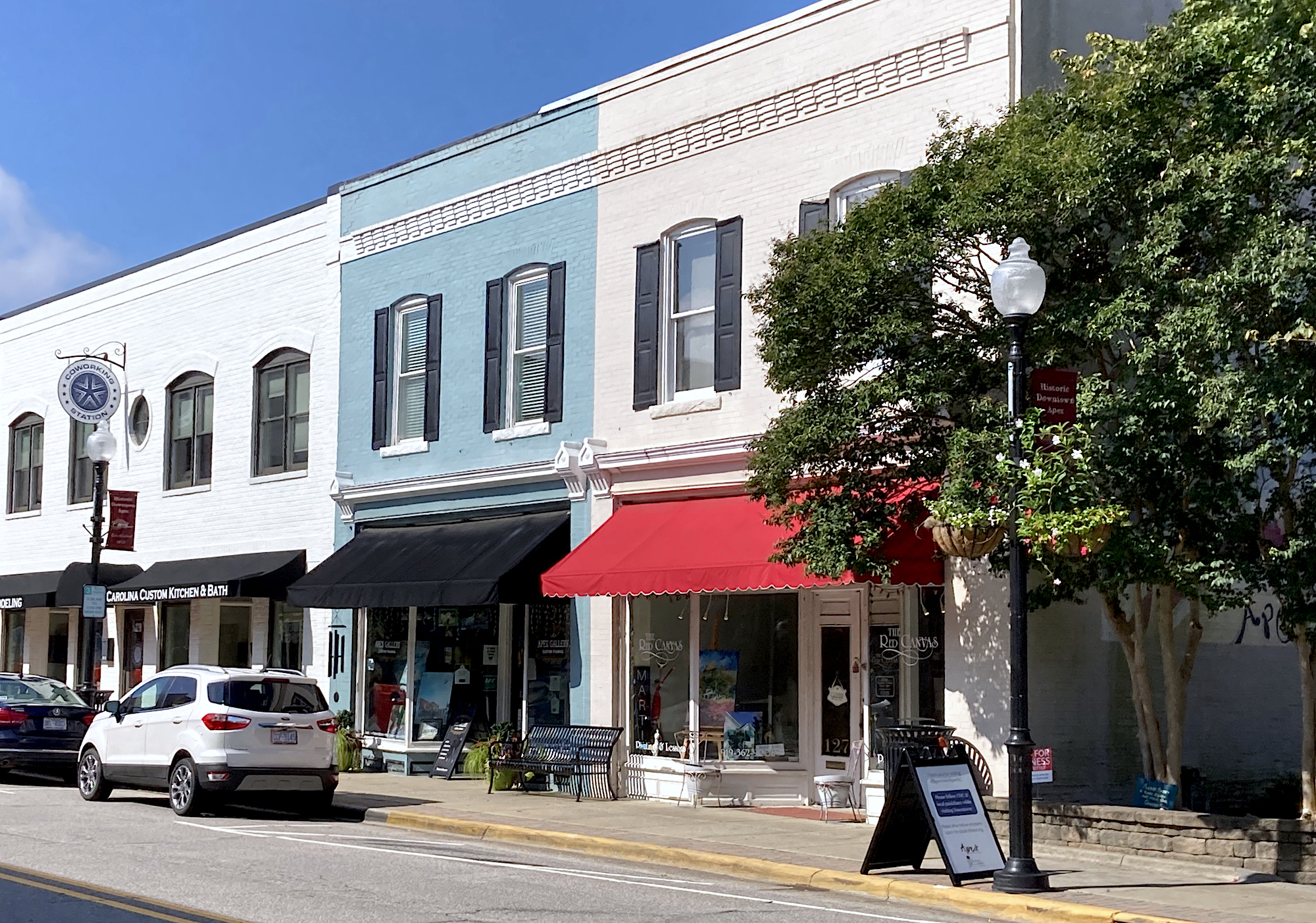
Well maintained downtown invites visitors to stroll as well as shop.
A Brief History of Apex
1854: Railroad station chartered
1860: First settlers arrived; dense forests cleared for farm land
1869: First train passed through; Apex became a water supply stop for trains and shipping point for tobacco, lumber, turpentine, and tar
1873: Town incorporated on February 23rd
1905: Fire destroyed much of the business district
1911: Second fire destroyed many commercial buildings; wood frame buildings replaced with brick buildings
1920: Population reached 1,000; remained a sleepy town until the 1960’s
1990: Population reached 5,000
2020: Population at 55,000 thanks to businesses in the Research Triangle
Looking for more small towns to explore?
Check out our "Destinations" page for other Worthy Detour stops.

